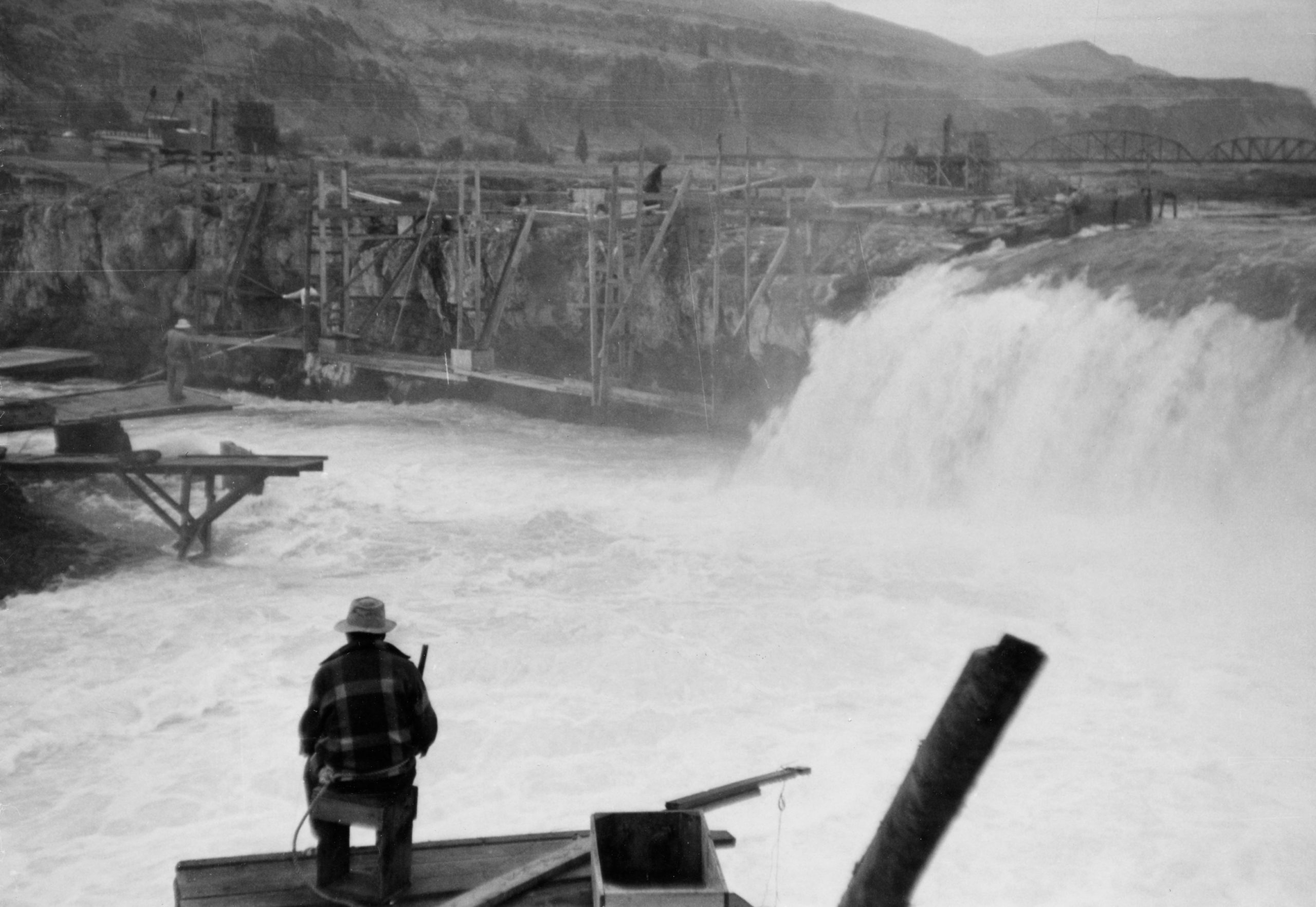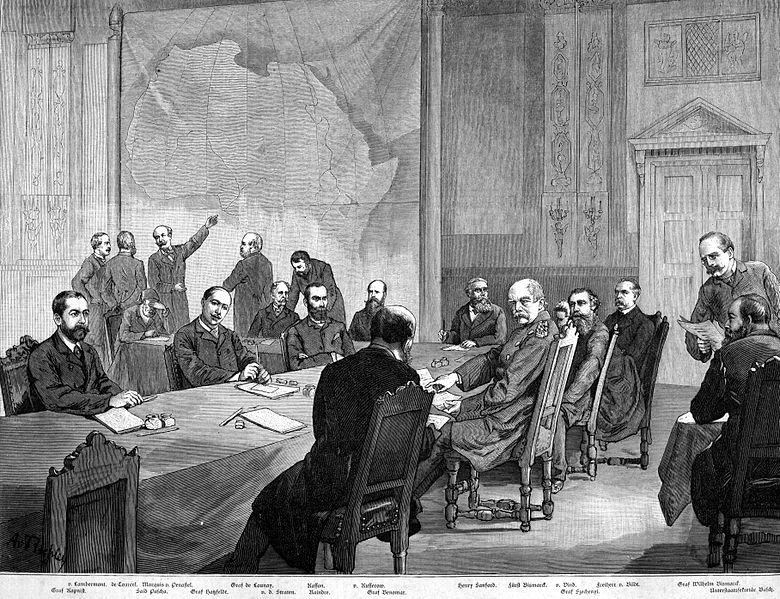
The International Law of Colonialism:
Johnson v. M’Intosh and the Doctrine of Discovery Applied Worldwide
Robert J. Miller
This article is part of our “200 Years of Johnson v. M’Intosh: Law, Religion, and Native American Lands” series.
If you’d like to check out other articles in this series, click here.
The United States Supreme Court’s first Indian law case, Johnson v. M’Intosh, was decided in 1823. In that case, the Court summarized and then applied four hundred years of international law and colonization to the Indigenous nations and peoples within the United States. Johnson is still the law in the United States today and has also influenced the jurisprudence and histories of other settler colonial countries around the world. Johnson has been cited scores of times by courts in New Zealand, Australia, and Canada, as well as by the British Privy Council. The elements or factors that make up this international law have been used by European colonizer countries since the early 1400s to establish empires around the world. These elements are plainly visible in the histories and policies of both former colonizer and formally colonized countries, as well as in these countries’ contemporary laws. For example, the elements are still present in the laws and policies of the United States, Chile, and Brazil.
This international law, called the Doctrine of Discovery today, is made up of ten distinct elements. Common law courts dissect crimes and torts into their underlying elements; my co-authors and I have used a similar form of analysis to examine the Doctrine and its legacy. In various books and articles, we have used these factors to compare how England applied the Doctrine and its elements in Australia, Canada, New Zealand, and the United States, how Portugal used the Doctrine to colonize Brazil, how Spain used that international law to colonize Chile, and how England and Germany used the Doctrine and its elements to colonize East Africa. President Thomas Jefferson also used the elements of this international law and the Lewis & Clark expedition in 1803-06 to strengthen the United States’ claim to the Pacific Northwest. I have also argued that the Doctrine laid the groundwork for American Manifest Destiny. Consequently, the Doctrine of Discovery has played major roles in the colonization of many countries around the world and is omnipresent in the modern-day laws, policies, and cultures of settler colonial countries and societies.
Johnson is still the law in the United States today and has also influenced the jurisprudence and histories of other settler colonial countries around the world.
Understanding these elements is crucial to understanding worldwide colonization and its continued effects on Indigenous nations and peoples. I will briefly set them out and describe how these elements define the Doctrine and how they were defined and used by the U.S. Supreme Court in Johnson. Readers can then compare the factors of this international law against the “legal” and historical colonization of Indigenous nations and peoples in their own and other countries.
1. First discovery. Under this principle, the Euro-American country that first discovered lands unknown to other Euro-Americans claimed property and sovereign rights over the lands and native peoples. Discovery alone, without establishing permanent physical possession, was considered grounds to claim only an incomplete and temporary title in the discovering country. The race by Europeans and the United States to discover new lands exemplifies this element. Captain James Cook, for example, buried English coins in bottles in modern-day Alaska, as did the Spanish. The Dutch posted pewter plates in Australia claiming ownership and sovereignty due to first discovery. Russia made the same claims in North America by erecting royal crests and burying numbered metal plates in modern-day Alaska and locations further south. Portuguese explorers erected stone padroas along the west coast of Africa and crosses in Brazil to prove where they had allegedly arrived first.
2. Actual occupancy and possession. England’s Queen Elizabeth I added this element to the emerging international law of colonialism in 1550-1587. She and her attorneys set forth the proposition stating that to create an internationally recognized title to newly discovered lands a European country had to do more than just see or sail past it. England and France began demanding that a colonizing country had to actually occupy and physically possess any newly discovered lands within a reasonable amount of time after a first discovery to create a recognizable title for that European country. England enforced this principle by granting charters to its explorers and settlers who were dispatched to what is now the United States. Elizabeth and her successor King James I directed their explorers and settlers to go to lands “unknown to all Christians.” European countries usually established occupation by building forts, trading posts, or settlements. This is one of the primary reasons Lewis & Clark built Fort Clatsop in 1805 at the mouth of the Columbia River in the Oregon Country. They were trying to solidify the United States’ first discovery claims to this territory.

The canoe landing area along the Lewis and Clark River at the Fort Clatsop National Memorial southwest of Astoria.
Wikimedia Commons. CC BY-SA 4.0
3. Preemption/European title. Euro-American countries were deemed to have automatically acquired property and sovereign rights over Indigenous nations merely by arriving at a location and planting their flags and religious emblems in the soil. One of these claimed rights was the power of preemption: the sole right to buy the lands of native nations if they ever chose to sell. The United States expressly claimed this property right of “preemption” in its first Trade and Intercourse Act of 1790, and it insisted on this right against Indian nations in numerous treaties. This Discovery principle is still United States law today and is reflected in the existence of tribal and individual Indian lands that are held “in trust.” Indian trust lands are owned by the United States as the legal owner and the tribe or individual Indian is the beneficial owner. Indian nations and individual Indians cannot usually sell, lease, or develop their trust lands without the permission of the United States. This is one of the living embodiments of the Doctrine of Discovery, and it is still federal law today.
4. Native title. After a first discovery, Indigenous nations were considered by the Euro-American Doctrine of Discovery to have automatically lost the full ownership of their lands. Indigenous peoples and nations could occupy and use their lands, but they did not have the full legal title. This change in legal ownership occurred without the knowledge or consent of native nations and, of course, without any payment. It is still federal law in the United States today.
5. Indigenous limited sovereign and commercial rights. After first discovery, Indigenous nations and peoples were also considered to have automatically lost other aspects of their inherent sovereign powers and their rights to international trade and diplomacy. After discovery, these nations were only supposed to deal with the specific Euro-American government that “discovered” them. The United States’ first Secretary of State, and later President, Thomas Jefferson expressly claimed these Discovery commercial, diplomatic, and property rights over the Indian nations to the exclusion of English rights in diplomatic communications with the British ambassador in 1792. In 1831, the United States Supreme Court held that Indian nations are not internationally recognized sovereigns but are instead “domestic, dependent nations,” and could not engage in trade or treaty making with other countries. The United States also enforced this provision against Indian nations in many treaty provisions.
6. Contiguity. Euro-Americans always made claims to enormous areas of land contiguous to their actual discoveries and settlements all over the world. In establishing colonies in North America in the early 1600s, King James I claimed and granted his colonists lands far beyond where their actual settlements were, and went so far as to claim all the lands from the Atlantic to the Pacific Oceans. In addition, international law stated that discovering the mouth of a river granted the discovering country a claim to the entire drainage system of that river. In 1804, President Jefferson and the United States made these exact claims to the 800 million acre Louisiana Territory and the Mississippi River, and in 1846 President James K. Polk made these same claims to the Oregon County and the Columbia River. England, Russia, Spain, and the United States all made enormous contiguity claims due to Discovery on the west coast of North America from modern-day California to Alaska.
7. Terra nullius. This Latin phrase means an empty or vacant land. Under the Doctrine, if lands were not possessed or occupied by any person when a Euro-American country made a first discovery then the lands were available for Discovery claims. England, for example, claimed all of Australia due to terra nullius although Aboriginal peoples had lived there for tens of thousands of years. In 1992, the Australian Supreme Court rejected that Discovery justification as a falsehood in Mabo v. Regina. Euro-Americans were very liberal in defining Indigenous lands as being “empty” and they often included areas that were actually populated by Indigenous nations and peoples. Euro-Americans also considered lands to be “empty” and available for Discovery claims if the native peoples living there were using or governing their territories in a fashion that Euro-American legal systems disapproved or did not recognize.

Drawing of the participants in the Berlin conference in 1884. Wikimedia Commons.
8. Christianity. Euro-Americans always used their religion as a sign of their alleged superiority over Indigenous peoples and cultures. This is unsurprising, as the Catholic Church was heavily involved with Spain and Portugal’s development of this international law in the early 1400s. The papal bulls of 1436 and the 1450s that granted the Canary Islands and portions of Africa to Portugal, and the bulls in 1493 that divided the world for Spanish and Portuguese colonization, declared that Christian conversion was the goal of colonization. Non-Christians were not recognized as having the same rights to land, sovereignty, humanity, and self-determination as Christians. In addition, the papal bulls authorized and justified colonization on the “need” to convert natives to increase the Christian religion. The United States, and all colonizing countries, justified their empires for centuries by the fact that they converted Indigenous peoples to Christianity. In the Berlin Conference of 1884-85 and the resulting Berlin Act of 1885, thirteen European countries legally justified carving up Africa for colonies based on the express justifications of converting Africans to Christianity and “civilizing” them.
9. Civilization. The Euro-American ideals of “civilization” and culture were always crucial aspects of Euro-American claims of superiority over Indigenous peoples and justifications for Discovery. Euro-Americans thought God had directed them to bring civilization, education, and religion to native peoples around the world. In addition, the American ideal of “Manifest Destiny” that developed in the 1840s was also used to justify the United States’ domination of Indian nations and peoples; American federal Indian policies pursued the goal of “civilizing” Indians for almost two centuries. In fact, the United States enacted the Civilization Fund Act in 1819. Furthermore, Chile, Brazil, and Argentina also developed their own policies similar to “Manifest Destiny” and justified their treatment of Indigenous nations and peoples due to the claimed need to convert and “civilize” native peoples.
10. Conquest. The law of war as recognized in Europe around the time of the development of the Doctrine of Discovery claimed that a conquering country acquired all the public lands, riches, and rights of a defeated monarch. Euro-American countries applied this same principle to their military victories over Indigenous nations. But Johnson v. M’Intosh also applied a second meaning to the “conquest” element. The opinion by Chief Justice John Marshall also implied that conquest is a term-of-art and means that the mere arrival in new lands and a first discovery by Euro-American countries is a “conquest.” Thus, a first Discovery was analogous to a military conquest and automatically passed property and sovereignty rights over Indigenous nations, their lands, and their assets to the discovering Euro-American country.
Merely reciting these elements shows the horrific impacts and significance of the international law Doctrine of Discovery on world history and on Indigenous nations and peoples. The Doctrine is still the law today and is very relevant to the modern-day existence and rights of Indigenous nations. The United States Supreme court and all federal and state courts still rely on the principles of Discovery and continue to cite Johnson v. M’Intosh. Property law and federal Indian law in the U.S. are intimately intertwined with this law of colonialism. The Doctrine impacted the history and application of religious, legal, and political practices in all the colonial powers and their settler colonial countries, and it largely remains the law today. I cannot help but point out the vestiges of the Doctrine in modern-day political actions when in 2007 Russia claimed the seabed of the Arctic Ocean and its oil and gas resources by planting its flag on the seabed, and that China planted its flag on the bottom of the South China Sea in 2010. And, what exactly does it mean that the United States planted its flag on the moon in 1969?
In conclusion, the international law Doctrine of Discovery has been the tool of colonization, domination, and the attempted destruction of Indigenous nations and peoples for over 600 years. Isn’t it time to take concrete steps to address that situation? ♦

Robert J. Miller is a professor at the Sandra Day O’Connor College of Law where he is also the Willard H. Pedrick Distinguished Research Scholar and the Director of the Rosette LLP American Indian Economic Development Program. He is the Chief Justice of the Pascua Yaqui Tribe Court of Appeals, a citizen of the Eastern Shawnee Tribe, and was elected a member of the American Philosophical Society in 2014.
Recommended Citation
Miller, Robert J. “The International Law of Colonialism: Johnson v. M’Intosh and the Doctrine of Discovery Applied Worldwide.” Canopy Forum, March 30, 2023. https://canopyforum.org/2023/03/30/the-international-law-of-colonialism-johnson-v-mintosh-and-the-doctrine-of-discovery-applied-worldwide/.

